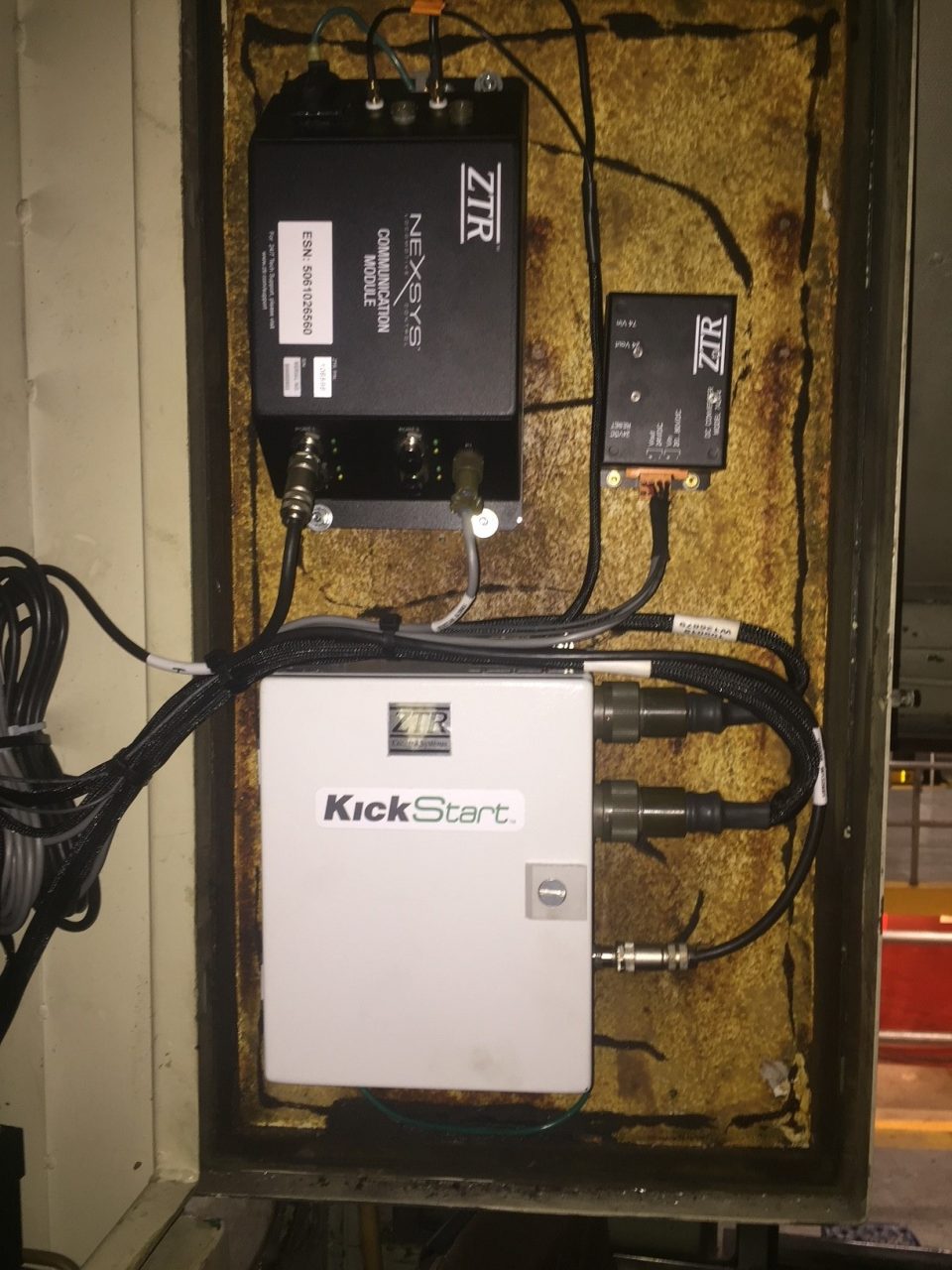Diesel engine starting systems require a quick burst of power, which is hard on a battery. A battery-only solution expected to provide in excess of 1,500 amps during start-up cranking, creates a large voltage drop that can reset electronics, causing a penalty brake application.
A large voltage drop at start-up is just one problem. Locomotive subsystems—safety, communications, PTC, health monitoring—have significantly different requirements that are a constant low-current draw on the batteries. All of these requirements can limit a battery’s useful life, weakening it, resulting in starting difficulties, the worst of which is known as a DWS, or “Dead-Won’t-Start
According to ZTR, the best source for the variety of power required by locomotives is a combination of lead acid batters and supercapacitors.
“This combination provides the right jolt of starting power while allowing the batteries to supply the necessary power for other systems,” ZTR Railway Division Director of Sales, Brian Nelson says.
“The ZTR KickStart™ uses supercapacitor technology to bolster locomotive batteries during the engine start, reducing battery strain. That means less energy drain from batteries, longer battery life, less time to recharge batteries, faster cranking speed and outstanding locomotive reliability,” Nelson explains.
Conventional locomotive batteries are slow to recharge and slower to deliver energy, ZTR points out.
Daily recharges will affect overall longevity. Batteries require periodic maintenance, last about 1.5 to 5 years—often with a rebuild, and could exhibit reduced performance. Supercapacitors, on the other hand, deliver high power quickly, are capable of one million cycles, require zero maintenance, and offer a lifespan of 10-plus years, with strong performance in all weather conditions.
KickStart provides benefits in three distinct yet integrated locomotive systems. For batteries, KickStart provides additional electric current at the beginning of the cranking sequence to aid in locomotive starting, reducing stress on batteries. Secondly, when starting equipment with KickStart enabled, the locomotive requires less cranking time to start, reducing wear and tear on these systems. And for onboard systems, KickStart reduces voltage drop during the starting phase to help preserve onboard electrical power, which is critical for reliable, continuous operation of systems including PTC, communications and health monitoring.
“From switchers to main line locomotives, KickStart has proven its versatility in helping virtually any locomotive type,” Nelson says. “It has improved starting reliability in the freight and passenger rail industries, modern and older fleets, and both high- and medium/low-horsepower locomotives. In fact, many KickStarts have been applied to high-horsepower locomotives that are 25 years or younger.”
The ZTR KickStart “has revolutionized locomotive starting power with supercapacitor technology,” adds Nelson. “KickStart™ is rapidly proving its worth with our customers, for one very simple reason: It effectively addresses the DWS problem.”
https://www.ztr.com



